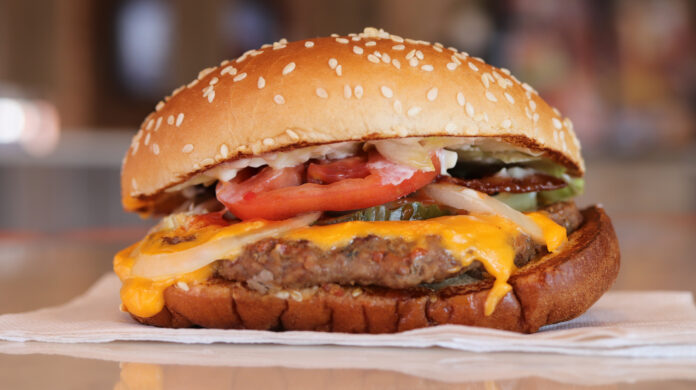In the midst of escalating costs, reduced foot traffic, and economic turmoil, America’s largest restaurant chains are reconsidering their spaces. Burger King, Popeyes, Denny’s, and Applebee’s are all spending millions on aggressive overhauls and technology upgrades in an effort to reclaim diners who are dining out less frequently.
Burger King’s “Sizzle” Makes a Statement
Burger King’s new image, referred to as “Sizzle,” has already been rolled out at 90 locations across the U.S. and Canada. The new stores are a big chunk of a $2.2 billion investment by the brand’s parent company, which even bought out its largest franchisee to accelerate remodels. The remakes include digital menu boards, self-service kiosks, warm colors, and large orange booths adorned with bold terms such as “JUICY” and “CRISPY.
Industry-Wide Facelifts to Fight Flat Sales
Burger King is not the only one. Popeyes is replacing kitchen equipment and technology to increase speed and efficiency. Denny’s is investing some $250,000 per restaurant to give itself a cleaner, more streamlined appearance — and it’s paying off. Test locations reported more than 6% increases in traffic and sales.
These adjustments are made at a difficult time. Visits to quick-service restaurants declined 1.6% in early 2025, reports Placer.ai. Visits to fast-casual restaurants were unchanged. In February, consumer dining spending decreased by $15 billion. Restaurant bankruptcies rose to the highest level since 2020.
Operators see no alternative even with the prices. “If you don’t modernize your system, you sort of die on the vine,” said Eric Gonzalez, a restaurant industry analyst.
Also read: Social Security Payment Today On April 16: How Much Stimulus Will You Get?
Remodeling in an Expensive Economy
It costs more to operate a restaurant these days. Food has risen 40% since 2020. Wages have increased 35%. And now, new tariffs promoted by the Trump administration may make items such as avocados and construction materials even more expensive.
Even so, restaurant owners regard remodels as an investment in the long haul. “These brands need to be refreshed,” declared Restaurant Business editor Jonathan Maze. Throughout the pandemic, many locations were closed, half-staffed, or repurposed as delivery stations. Now it’s time to get people back inside.
A More Modern Look Across the Board
Across the industry, the fast-food aesthetic has changed. Gone are the teal-and-salmon Taco Bells and carpeted Wendy’s with salad bars. Today’s look is sleek, minimalist, and sometimes criticized for being too serious. Even Chuck E. Cheese is going digital, adding programmable displays to give customers something new every visit.
But customers seem to enjoy cleaner looks. Gen Z came up with revamped McDonald’s and consider the brand sleek. Millennials, on the other hand, grew up with decaying fast food of the ’90s that paved the way for fast-casual alternatives like Chipotle and Panera.
Technology as a Lifeline
The greatest advantage of these upgrades may be out of sight. Self-order kiosks minimize labor requirements. New drive-thru technology accelerates service. AI is even being piloted to accept customer orders. Wendy’s CFO recently stated that these upgrades may enhance labor productivity and raise margins by 2% within three years.
Chad Moutray of the National Restaurant Association summed it up simply: “Restaurants need to find ways to cut costs wherever they can.”
Looking Ahead
With customers being ever more mindful about where and how they spend their money, brands need to shift. The renovations won’t necessarily be inexpensive. However, the majority of chain restaurants, just being the way it is will no longer do. As price wars heat up and expenses are driven through the roof, dinner is being rewritten. Brands are moving towards one elegant booth and e-kiosk at a time.








